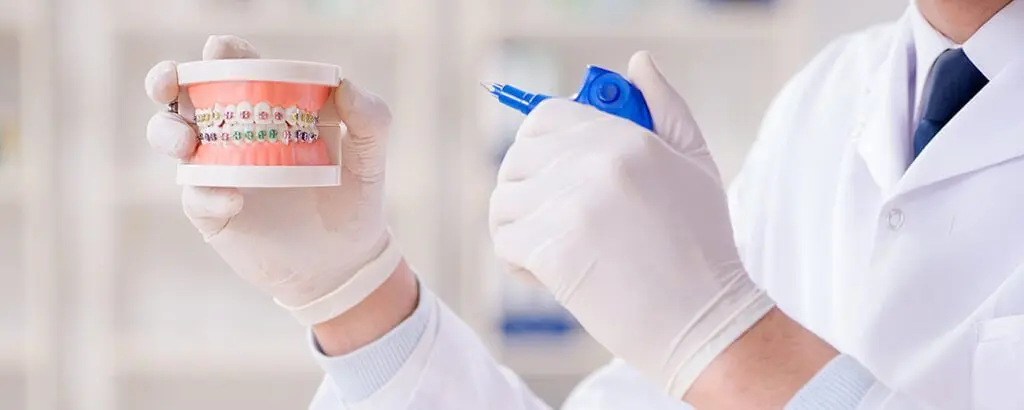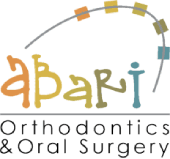Orthodontic Treatment at Abari Orthodontics and Oral Surgery

The benefits of orthodontic treatment like braces often go beyond the obvious physical changes of an improved bite and straighter teeth; it’s also a great way to improve a person’s overall self-image.
The Value of Straight Teeth
While having beautiful straight teeth is important, even more important is the need to alleviate any potential health problems associated with the teeth or jaw. Crooked teeth or jaw problems may contribute to improper cleaning of teeth, leading to tooth decay and possibly gum disease or total tooth loss.
Orthodontic problems that go untreated can lead to chewing and digestion difficulties, speech impairments, and abnormal wear of tooth surfaces. Over time, excessive strain on gum tissue and the bone that supports the teeth can affect the jaw joints leading to problems such as headaches or face and neck pain.
The American Association of Orthodontists recommends that children get an orthodontic evaluation no later than age 7. Though orthodontic treatment can be done at any age, timely treatment ensures maximum dental health.
With all of the recent advancements in orthodontics, wearing braces has never been easier. State-of-the-art appliances and treatments are now available, from traditional metal braces, to clear and tooth-colored brackets, to NASA-type wires that are heat activated and require fewer adjustments! Some patients may even be candidates for treatment with Invisalign, a revolutionary way to straighten teeth using clear, retainer-type aligners that require no braces or wires!
If treatment is necessary, we will thoroughly discuss which treatment option is best suited for you! Reasons for braces for adults & children include:
- Breathing or swallowing problems: Mouth breathing can lead to snoring and sleep apnea.
- Crossbite: One or more upper teeth bite inside the lower teeth (towards the tongue).
- Crowding: Involving extra teeth or malpositioned teeth.
- Deep Overbite: The lower front teeth bite into the upper tissue of the upper teeth.
- Disfiguring of the face & mouth: Affects the development of the jaw and position of the teeth.
- Jaw & jaw joint pain
- Missing or extra teeth: Due to tooth decay, injuries, or inherited problems.
- Overjet (protruding upper teeth): Upper teeth that protrude beyond normal and are usually associated with a short lower jaw.
- Self-image: An attractive smile can boost a person’s self-image and confidence.
- Spacing between teeth: Teeth are missing or may be too small or too large.
- Speech, chewing, or biting problems
- Underbite (lower jaw protrusion): Lower jaw is longer than the upper jaw.
Specific to children:
- Finger or thumb sucking: These habits can cause protrusion of the upper incisor teeth, and mouth breathing.
- Teeth erupting out of position: Can be guided to proper alignment.
What Are Phase I and Phase II treatment?
Phase I, or early interceptive treatment, is limited orthodontic treatment (i.e. expander or partial braces) before all of the permanent teeth have erupted. Such treatment can occur between ages six and ten. This treatment is sometimes recommended to make more space for developing teeth, correction of crossbites, deep overbites, underbites, or other consequences of harmful oral habits.
Phase II treatment plans are also called comprehensive treatment because they involve full braces when all of the permanent teeth have erupted, usually between ages eleven and thirteen.
What does orthodontic treatment involve?
Orthodontic treatment involves three stages:
1. Planning Stage: Your visit, after an initial exam and consultation, is for orthodontic records and may include the following:
- Castings or “molds” of your teeth.
- Computer-generated photographs of the head and neck that will aid in planning.
- Photographs of your face and mouth.
- X-rays of the teeth and jaws.
- After careful planning, your orthodontist will design and apply braces or fabricate custom-made appliances for you.
2. Active Stage: Active treatment involves visiting your orthodontist on a regular basis for adjustments and following specific treatment requirements to ensure successful treatment.
3. Retention Stage: When treatment is completed, the braces and/or appliances are removed and a new appliance is made. Usually, these retainers are removable and will maintain the changes made to your teeth if worn continuously until the teeth and bone are stabilized in their new positions.
Your Unique Orthodontic Treatment
Treatment and retention times vary depending on each individual case. Your orthodontist will ensure you have a successful treatment for a beautiful smile that can last a lifetime.
Orthodontics can not only help straighten your teeth to give you an appealing smile but can greatly contribute to the health of your jaw, teeth, and sometimes your overall health. Make sure to follow the map when you come for your first visit!

